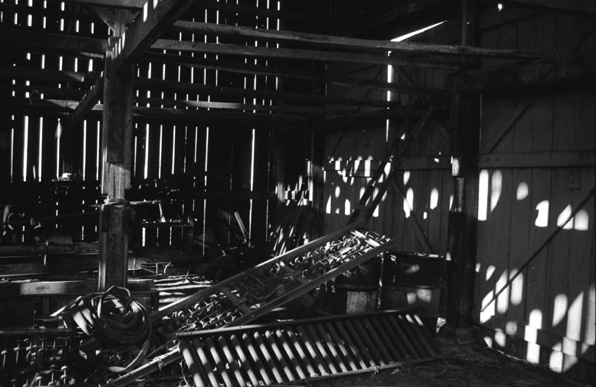Most writing about architecture, beyond the usual documentary descriptions in professional magazines, involves the kind of communication that is broadly encompassed by the term criticism. It is the stuff of professional critics, some good, some not so much, and leans toward the academic. Most of its best examples are engaged with writing about cities - their history and future, how they work and what they mean. Inummerable books and articles by Jacobs, Goldberger, Sorkin, Lange and so many others are thoughtful descriptions of buildings and most often the cities in which they reside. I read a lot of this stuff because I am an architect, a particularly geeky one when it comes to my own profession.
However, as an architect, I find that precious little of this kind of writing relates to what I do as a designer of spaces for people to inhabit. I don't design cities and have a fair skepticism about the hubris of anyone who wants to. For the most part I am interested in how a space feels, about how it will become the stage of events yet to play out, of personal dramas both joyful and tragic. To communicate this to my clients I use all the tools that architects have at hand - models, both physical and computer, drawings and sketches. However, with even all of these mediums employed, I do far more verbal descriptions of future spaces than anything else. I try to describe the spaces, how it looks and feels when you walk in, when the sun dips below the horizon, or how room sits in winter and summer. My clients listen to me far more than they review drawings and peruse models and they form their impressions of the nascent building largely from these verbal descriptions and their trust in me.
"Writing about music is like dancing about architecture"
attributed variously to Elvis Costello, Frank Zappa and Miles Davis. (My bet is on Zappa, but I'd love to hear it in Miles' gravelly voice with a few expletives thrown in.)
Maybe the same can be said about writing about architecture, or at least the kind of verbal description of a place that I am talking about. Maybe it is doomed to failure. Or maybe, in the hands of the best writers, the description of a place can be such a rich evocation of both the physical setting and the psychological landscape, that architects ought to pay attention.
Chapter 5, The Wapshot Chronicle, by John Cheever
"The heart of the Wapshot house had been built before the War of Independence, but many additions had been made since then, giving the house the height and breadth of that recurrent dream in which you open a closet door and find that in your absence a corridor and a staircase have bloomed there. The staircase rises and turns into a hall in which there are many doors among the book shelves, any one of which will lead you from one commodious room to another so that you can wander uninterruptedly and searching for nothing through a place that, even while you dream, seems not to be a house at all but a random construction put forward to answer some need of the sleeping mind."
I don't know about you, but I have been in that house, that imaginary place that is both very precise and detailed, but generic enough to connect to the memories and imaginations of so many readers. In my mind I can place this house in New England, Cheever's landscape, and smell the slightly briny air and moldy books and drying boots. I can place it in the arid West, and hear the warp of dry floor boards and the hum of crickets outside beyond the lawn once-tended.
So much of the task of architect, if not engaged in the purely ego-driven game of "making architecture", is in a sense trying out these descriptions on our clients and seeing how they react. How do the descriptions of the spaces of the building evoke the memories and imagination of the clients and mesh with their expectations and desires. I think most architects do this unconsciously, reading the client's reactions, judging their responses and readjusting the spaces in their heads in a series of rapid tweaks and revisions. I think we would do it better if we read a bit more and were more conscious of how great writers evoke the same responses in ourselves, to give ourselves over to the descriptions of someone else of other places and our own tugs of memory and desire.





